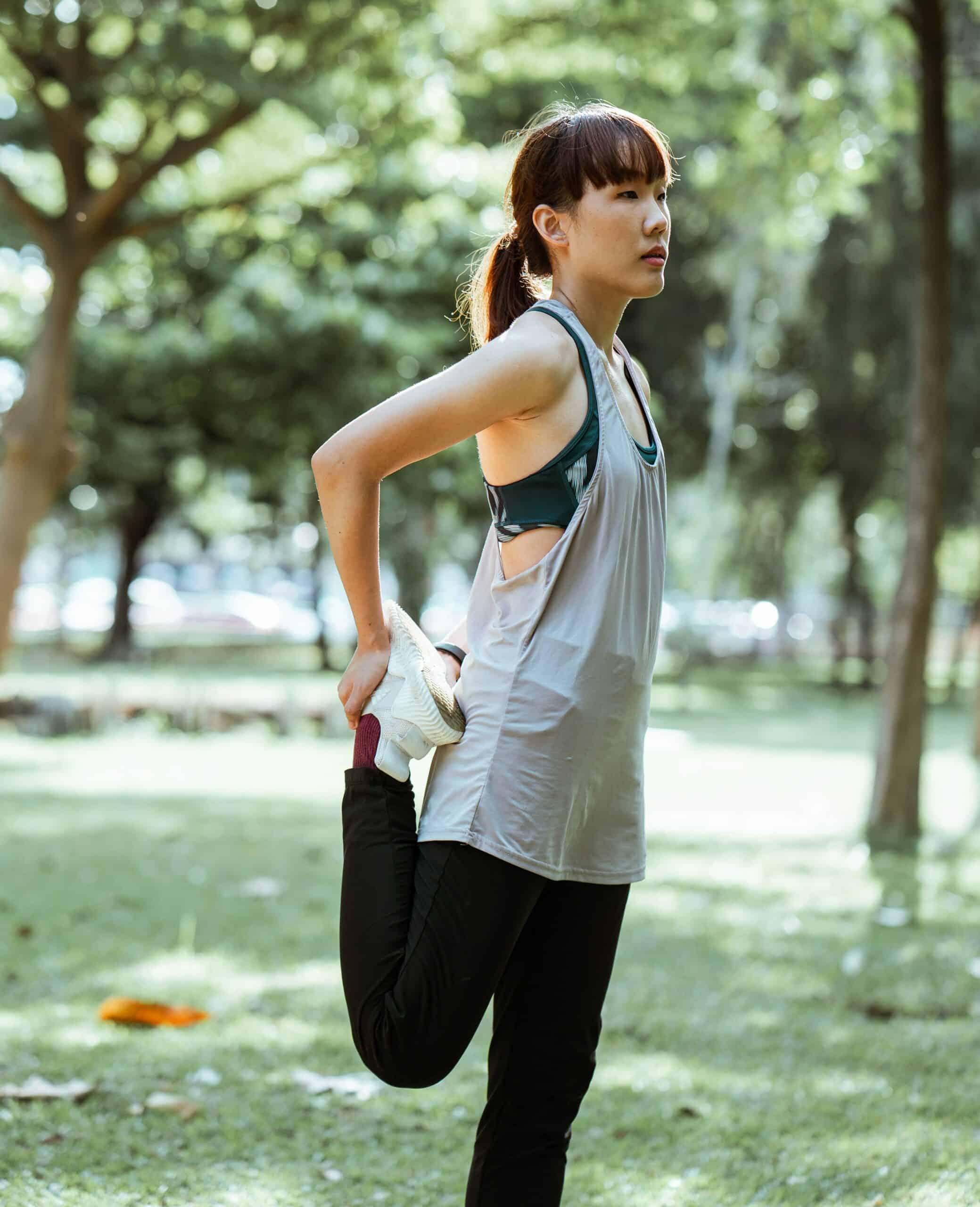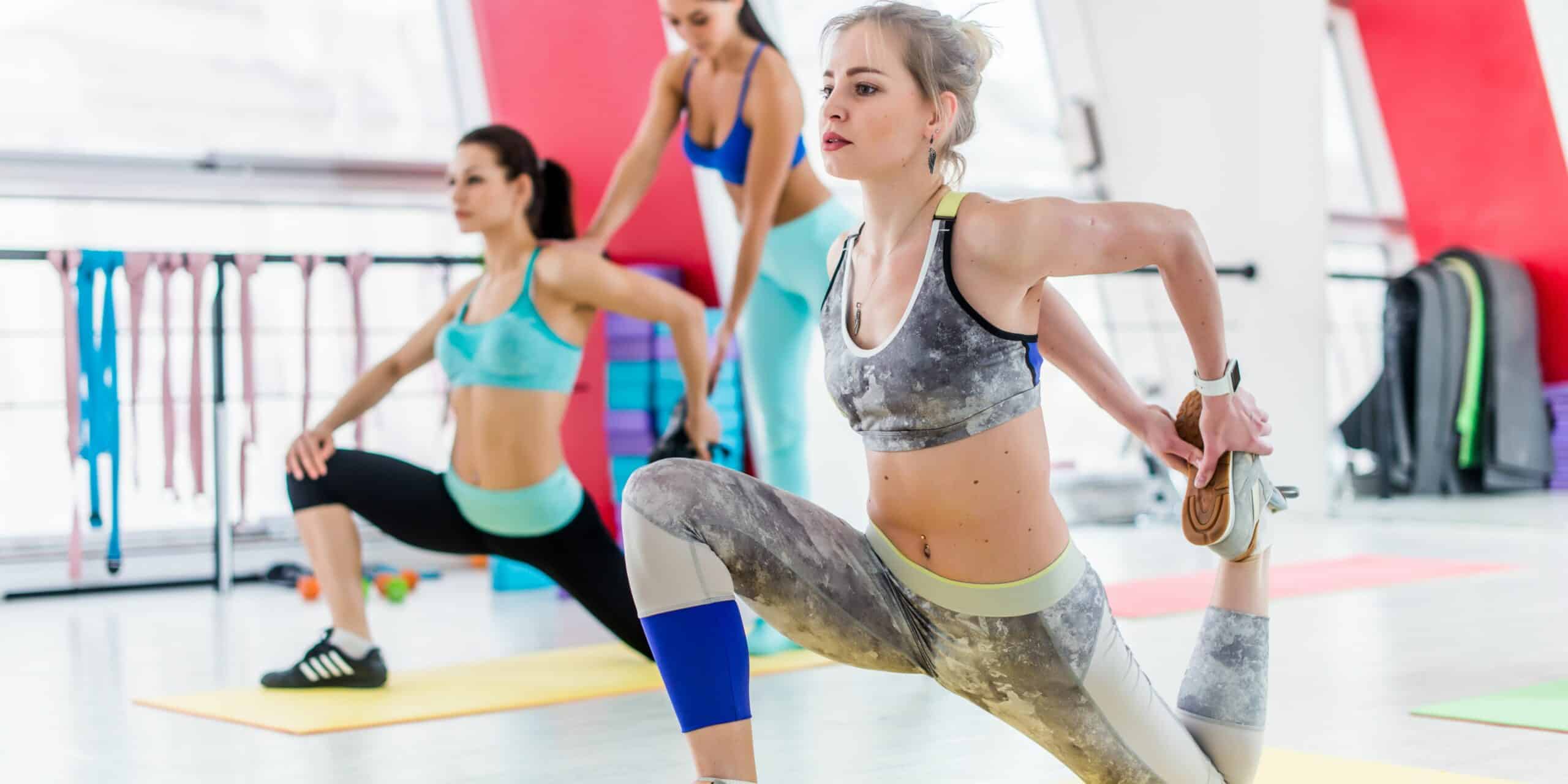Your quads play an essential role in your running. They help stabilize and absorb impact as your feet hit the ground. Strong, flexible quads propel you forward by transferring energy to your hamstrings. Quads get a serious workout while running, which is why frequently stretching your quads will prevent injury, and improve your run form, and speed.

Why it’s Important for Runners to Stretch
Stretching offers many benefits for runners. Here’s a look at the value you can garner from improving your stretching habits and routines:
- Injury prevention
- Greater range of motion
- Less muscle tension
- Greater capacity for muscle building
- Reduced soreness
- Avoid muscle cramping
- Better running performance
- More blood flow to your muscles
Most runners find stretching tedious because it requires slow, methodical movements but failing to stretch can lead to tight quads which increases the risk of injury. Injury doesn’t only come in the form of a strained quad, all the muscles of the leg are interconnected. An inflexible quad may cause a runner’s knees to endure more unnecessary impact.
While new products like Theraguns and other great gifts for runners can help ease discomfort after a long run, stretching is consistently one of the best practices recommended by running coaches and physicians alike.
How Your Quads Activate While Running
The term quads is short for quadriceps. As the name implies, it refers to a group of four muscles in the front of the thigh. These muscles are used when extending or straightening the knee.
During running, quads bend the hip and extend the knee. Quads stabilize the body and absorb impact. This contraction and extension make it possible for you to propel your body forward. You’ll feel your quads strongly activated during uphill running, but know that you’re quads are in use with every step, even walking.
Quads are activated during daily activities as well like climbing stairs, which is why stair climbing can be most challenging after a long run. These muscles aid in making you a stronger runner. Most running coaches and personal trainers will encourage runners to do lunge workouts and squat routines to improve their speed.
6 Quad Stretches All Runners Should Do
Beginning a stretching routine that includes quad stretches will help you feel your best while continuing to improve your run form and speed. Here are the best ways to stretch your quads.
1. Standing Quad Stretch
One of the most basic quad muscle stretches is one you’ve likely seen before from other runners or gym goers. It’s the upright quad stretch. You can do it anywhere, but you’ll want to have a wall or tall object nearby for stability.
1. Stand close to a wall or a tall, sturdy object you can use for support.
2. Bring one ankle up behind you and hold it gently around the ankle.
3. Keep your knees close together and act like you’re pressing your knee to the floor.
4. Feel the stretch through the front of your thigh.
5. Hold for 30 to 60 seconds.
6. Switch legs and repeat.
While doing the stretch, try to keep your abs tight and your posture straight so that you don’t sag or thrust your mid-section forward. You want a nice upright posture during the stretch.
2. Back-Lying Quad Stretch
If you’re in an area where you can comfortably lie on the floor, some runners prefer to do their stretches on the ground.
1. Lie flat on your back with your legs fully extended.
2. Bring one knee toward your chest.
3. Do not lift your head or back off the ground. These parts of your body should remain stationary throughout the workout.
4. Gently grab your knee with both hands and pull it toward your chest.
5. Hold the stretch for 30 to 60 seconds.
6. Switch legs and repeat.
Lifting your neck or back will put strain on these parts of your body. You must remain disciplined and keep your neck and back relaxed throughout the workout.
3. Side-lying Quad Stretch
While you’re on the ground, you can roll to your side to continue stretching your quads. Some runners also find it more comfortable to stretch lying on their side because they don’t feel the temptation to strain their neck and back.
1. Lie on your side. You can place your arm under your head for support.
2. Bring one heel behind you as you bend your knee.
3. Use your hand to hold your ankle.
4. Gently pull your leg and press through your knee to feel a good stretch through your quads.
5. Hold for 30-60 seconds.
6. Repeat on the other leg.
4. Prone Quad Stretch
Roll onto your stomach for another way to stretch your quads. Place your elbows on the floor for support and keep your head up. This stretch is good for stabilizing your pelvis if you struggle with that in other poses.
1. Lying on your stomach, bend your knee back toward your glutes.
2. Grab your ankle with one hand and gently pull your ankle toward your glutes.
3. Hold the stretch for 30 to 60 seconds.
4. Repeat for the other leg.
In this pose, it can be challenging or awkward to reach your ankle. If so, just wrap a towel around your ankle and use that to pull gently into the stretch.
5. Kneeling Quad Stretch
This stretch feels good in various parts of your legs and glutes but is also an effective quad stretch. You can do it anywhere, even if you don’t have something sturdy to support yourself or a clean ground to lie on.
1. Start in a lunge position with one knee on the ground and your other foot forward.
2. Lift your back foot up toward your glutes.
3. Reach your arm back and hold your ankle.
4. While keeping your upper body straight and upright, gently pull your ankle toward your glutes.
5. Hold for 30 to 60 seconds.
6. Repeat for the other leg.
6. Child’s Pose
The child’s pose stretch is good for beginners just starting a stretching routine. If you are just getting started with stretches for runners, you’ll find child’s pose simple and easy to do. Plus, it offers a great stretch through the back and arms at the same time, and you don’t have to repeat it for each leg.
1. On the ground, kneel with your toes pointed out behind you.
2. Sit back with your glutes on your heels.
3. Place your palms out in front of you as you bend at the waist and bring your chest toward the floor.
4. Keep your arms fully extended in front of you and place your head between your arms.
5. Hold the stretch for 30 to 60 seconds.
How to Properly Activate Your Quads While Running
As you look to increase your speed and mileage, you’ll need stronger quads to support you on your runs by allowing your hips to offer more power while driving you forward.
To ensure you’re using all your muscles equally, be sure you’re running outside as much as or more than you run on a treadmill. While a treadmill is a great training tool for pacing and can help with staying on track during bad weather, it also allows you to engage your glutes and quads less than in outdoor running where you have to push off for that forward propulsion.
Also, know that your glutes support your quads. You shouldn’t work one muscle group more than the other or you’ll end up using one muscle group more in your running, which limits your power.
Allowing Time for Post-Run Stretches to Improve Run Speed and Endurance
Now that you know how to stretch your quads post-run, you must allow the necessary time to complete this activity. In some cases, it might mean shortening your run to leave time for stretching during a busy day. With time, you’ll see the benefits a good stretching routine provides with less time off because of injury and greater speed and endurance.
FAQ
The most common cause of quad tightening during running is overuse and fatigue. Taking a day off and doing some stretches can reduce the likelihood of quad-tightening.
Yes, tight quads could be the source of your knee pain so you should still stretch your quads if your knees hurt.
Quad stretches can help with reducing knee pain, preventing injury and improving flexibility.





